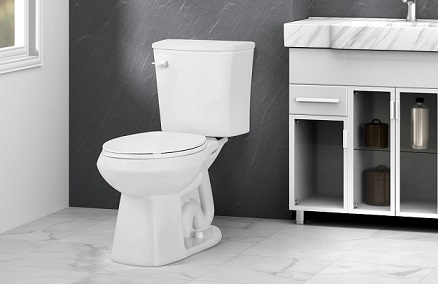 NATIONAL REPORT—When searching for water conservation opportunities in a hotel, the guestroom bathroom is a prime target. While most showerheads and faucets today offer savings opportunities, where huge progress has been made in recent years is in the engineering and design of toilets. While the current federal standard in the U.S. is 1.6 gallons per flush (gpf), the EPA’s own WaterSense site lists 73 models that use just .8 gpf. Of those 73 models, 16 are made by Niagara Conservation Corp. Green Lodging News recently spoke with Michael Campbell, Director of Business Development at Niagara, to talk toilet trends and to learn what makes his company’s toilets so unique.
NATIONAL REPORT—When searching for water conservation opportunities in a hotel, the guestroom bathroom is a prime target. While most showerheads and faucets today offer savings opportunities, where huge progress has been made in recent years is in the engineering and design of toilets. While the current federal standard in the U.S. is 1.6 gallons per flush (gpf), the EPA’s own WaterSense site lists 73 models that use just .8 gpf. Of those 73 models, 16 are made by Niagara Conservation Corp. Green Lodging News recently spoke with Michael Campbell, Director of Business Development at Niagara, to talk toilet trends and to learn what makes his company’s toilets so unique.
Campbell was first asked how the hotel industry is doing when it comes to choosing water-efficient toilets. “They are getting there,” he says. “There is a definite push toward sustainability. I would give them an A for their recent progress. Brands are testing the latest water-efficient models and the brands’ design and engineering teams are doing a great job focusing on efficiency. Each company has its own initiatives, but they are all very concerned about what they are trying to do at this point.”
Making the investment in highly water efficient toilets more attractive has been the proliferation of rebate programs. “The Inflation Reduction Act of 2022 is being filtered down to local municipalities in the form of rebates,” Campbell says. “We can help people find those rebates.” On the EPA WaterSense website there is also a database of rebate programs available in the U.S.
Toilet Types Explained
There are three basic types of toilets available to hoteliers today: gravity-assist, pressure-assist, and vacuum assist. Gravity-assisted toilets function through gravity, as their name implies. When you push the handle, a valve opens within the tank and the water falls from the force of gravity. As the water falls inside the bowl a siphoning effect is created in the trapway at the base of the toilet.
A pressure-assisted toilet—also known as a power flush toilet—contains a sealed pressure tank that houses air and water. The vessel traps air, and as it fills with water, it uses the water supply line pressure to compress the trapped air inside. When a flush is triggered, this compressed air forces the water into the bowl, so instead of the “pulling” or siphon action of an ordinary toilet, the pressure-assist unit “pushes” waste out. Campbell says some pressure-assisted toilets can create an unwelcome splash or bidet effect.
What Niagara has developed is a toilet that uses a vacuum assist. “It creates a powerful flush,” Campbell says. “You get a pull, and the water follows behind it.” What is also unique about Niagara’s toilet is its fill valve. Because such little water is used, the valve remains submerged, dramatically reducing any noise.
All About MaP Scoring
When comparing toilets for your hotel, it is not just water efficiency that matters. You should know how well it removes waste. To learn that you can ask for a toilet’s MaP score. A voluntary program, a MaP score represents the number of grams of solid waste (soybean paste and toilet paper) that a particular toilet can flush and remove completely from the fixture in a single flush. Essentially, the MaP test is a test to failure. MaP Testing is an independent testing program not affiliated with nor controlled by any manufacturer or group. One can rank toilets on the MaP website by their scores. To date, over 4,500 different tank-type toilet models have been tested, over 4,300 of which are reported in this public database. In addition, another 565 flushometer bowl/valve combinations have been MaP tested. Results are reported here. Toilets highly recommended score in the range of 600 to 1,000 grams. Campbell says Niagara’s .8 gpf toilets can handle 1,000 grams of waste.
Dual flush toilets, sold by Niagara and other companies, have been around for years and can generate significant savings if used properly. Water use is as little as .5 gpf per flush. “Users can get a little confused sometimes,” Campbell says, adding that they are more common in residential settings.
When comparing toilets, education and proof are key. In addition to having a resource library online, Niagara has posted a water savings calculator on its website to help hoteliers know what they will save if they switch to a Niagara product.
Proof of successful use is also important. In the case of Niagara, it has case studies online, including one focused on the Holiday Inn Express Hotel & Suites in Surprise, Ariz. That property replaced its 3.5 gpf toilets with 115 .8 gpf toilets, resulting in a savings of $8,000 in 35 days. Since the installation, the hotel is using 55 percent less water than with the previous toilets. Warranty length and coverage is also important, of course.
Glenn Hasek can be reached at greenlodgingnews@gmail.com.





